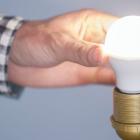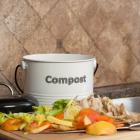A menstrual cup? Is that what is sounds like? Gross.
Submitted by Liza Wood on | Updated Sat, 17/09/2016 - 23:49

This is a fairly typical response when first introduced to the idea of a menstrual cup. I’ll admit, it isn’t pretty. No one likes to imagine a reusable vaginal insert that collects the menstrual fluid. But let’s be real – vaginal bleeding isn’t (and never will be) pretty – so let’s start by dropping the shame around menstruation. And once we’ve gotten over that, we can address something that’s a lot less pretty: the amount of waste that half the population is producing in relation to their monthly cycle.
Before diving into the sustainability implications of menstrual cups, let’s get a clearer picture of what they are. Menstrual cups, along with washable pads, are reusable feminine hygiene products that boast sustainability benefits. Brands like Diva Cup, Soft Cup, and GladRags are popular examples in the United States, but there are dozens of products with slightly different features. Generally though, most menstrual cups are silicon bell-shaped vessels that are inserted to collect period blood (to be worn up to 12 hours), and reusable pads are fairly self-explanatory – fabric liners that can be machine-washed.
So, what on earth does this has to do with climate change and environmentally friendly behavior? As with most products that challenge our disposable culture, there is a host of benefits that green feminine hygiene products address: from the resources for production to the waste created, as well as their financial costs.
First, let’s think about what conventional disposable feminine hygiene products are made of. The fluffy absorbent material celebrated by Maxi Pad commercials is usually bleached pulp or viscose rayon – essentially wood pulp. Though these materials are biodegradable, their production comes at a great environmental cost, particularly from the chemicals and heavy metals used in manufacturing [1]. Then there is the plastic. Unlike the rayon, plastic is not biodegradable, which is why it finds its way into all nooks and crannies of the world – food containers washed down city sewers, plastic bags stuck in trees, and plastic wrapping in the stomachs of marine animals. So it’s no surprise then tampon applicators make their way onto beaches and into waters, like the 170,000 applicators that were collected along US coastal areas between 1998 and 1999 [2]. All of these resources used in menstrual products have different impacts on global warming due to the fossil fuel demand of production. For example the strings of tampons made from either cotton or polypropylene require 14.3 and 7.58 kg CO2 equivalent, respectively, the cotton requires 3.06 kg CO2 equivalent and the rayon 4.8 kg CO2 equivalent. Silicon, however, requires only 2.71 kg CO2 equivalent, making it the least damaging resource in menstrual product material [3].
Second, the end of a product’s life is just as important to consider as its creation. For tampons and pads, the grave is large, messy, and partly non-biodegradable. There are a lot of estimates out there as to how much waste feminine hygiene products produce, however, the general range is that a woman will use 8,000 to 17,000 disposable pads and tampons in her lifetime [4,5]. What that means for waste is that in one year, 20 billion pads, tampons and applicators are sent to North American landfills alone [2]. And on a global scale, this number is estimated to be over 100 billion menstrual disposables in landfills annually [5]. By weight, one ton of plastic garbage sitting in a landfill is equal to about 1.43 metric tons on CO2 into the atmosphere (3.71 cars), so all of those applicators can add up to have negative impacts [6].
But don’t let these numbers get you down, because the whole point of this article is to offer an alternative. As far as materials go, menstrual cups and reusable pads are made from cotton and silicon, and though these have their own impact, it logically follows that because they are meant to be re-used (up to five years) rather than disposed, their environmental impact is lower. Based on life cycle assessments of different menstrual products it is calculated that a DivaCup will only require 0.04 kg kg CO2 equivalent in one year, while a year’s worth of Tampax tampons will require 5.26 kg CO2 equivalent [3]. And with the expected lifespan of a DivaCup being five years, this means that women can save 26.1 kg CO2 equivalent every five years (5.22 kg annually) by choosing a reusable cup over tampons.
To top it off these environmental benefits, there is also a clear financial incentive to become a user. GladRags estimates that if women are using 20 tampons or pads per month at $5 per box, they’ll spend over $3,000 in their lifetime [4]. On the other hand, menstrual cups range from about $20-50, and as mentioned before, are meant to last for at least five years. At this rate, disposable products can cost women ten times more than reusable products, saving upwards of $2500. If you’re curious about your personal potential savings, there are calculators out there for a more individual estimate.
Now, I can’t let Diva Cups and GladRags off that easy – every product has its positives and negatives. While the benefits of resource use, waste, and finances are impressive, these have to been considered on balance with some objections:
Does it really even work? As far as user preference goes, there are those that praise products like that Diva Cup, hailing it as a champion of simplicity and environmental friendliness. On the other hand, there are those that simply loathe it – for its awkwardness and smell, among other things. If you’re interested in more opinions, you can always peruse the thousands of comments on Amazon, but my recommendation would be to give it a try yourself.
Sure, I’m cutting down on waste, but will this really make much of a difference to the environment? In the grand scheme of things, feminine hygiene products do only make up about 0.5 percent of personal landfill waste, so it could be argued that this isn’t the most important thing to be tackling [7]. Of course, it would be great if we could terminate the use of plastic altogether, or heck, live in a totally carbon neutral world. But if you’re female and picking your battles reasonably, then this is a pretty simple sustainable step.
Alright, I believe you, but everyone else will still think its gross and weird… As I started off with, no one likes talking about reusable menstrual gear, or any menstrual gear for that matter. But we’re living in a world where social norms need to start changing, and feminine hygiene is an easy place to start. So give it a try and start making people uncomfortable by advocating for discussion around women’s reproductive health and doing the environment a favor.
[1] http://www.life.ca/naturallife/0908/ecofiber_or_fraud.htm
[2] http://lunapads.com/learn/why-switch/environment
[4] http://gladrags.com/learn.html
[5] http://menstrualcup.co/why-use-a-menstrual-cup/ecological/
[6] http://www.stopwaste.us/partnership/calculator/
[7] http://www.thechicecologist.com/2010/04/the-environmental-impact-of-everyday-things/
You will save the Earth by sharing and/or tweeting (corny right?)





